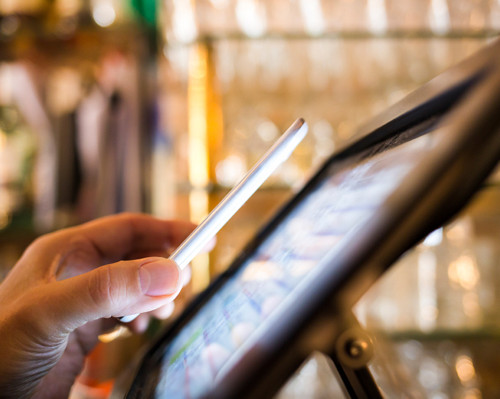Great Britain’s next great e-commerce run up will be powered in large part by purchases on mobile devices, a trend that U.S. merchants can look at with envy or with hopes of learning a thing or two.
In some ways, it’s hardly surprising that the UK is seeing such success in mobile, an area that has bedeviled U.S. retailers. While the United States is also seeing dramatic growth in smartphone and tablet adoption, the devices’ popularity hasn’t translated to wild increases in sales on mobile. Mobile sales are expected to make up 19 percent of e-commerce sales in the U.S. 2014, compared to 27 percent in Great Britain, according to eMarketer.
Global research firm eMarketer says mobile commerce will be a key contributor to strong growth in the United Kingdom’s e-commerce sector this year. The firm predicts a 16 percent increase in e-commerce sales, with more than a quarter of those purchases being made on smartphones and tablets.
“M-commerce is seeing such good growth for a couple of reasons: Mobile device ownership is rising rapidly, and consumers are becoming more comfortable making purchases on these devices,” says Bill Fisher, an eMarketer analyst in Great Britain. “Tablets, in particular, offer a larger and more tactile interface for online shopping, which is why we’re seeing particularly fast growth in tablet commerce.”
The U.K’s e-commerce sector is already the envy of the world. The region boasts healthier numbers on any number of digital commerce yardsticks. While more e-commerce dollars are spent in the United States in real terms, as a percentage of retail sales, the United Kingdom outpaces the U.S. by 11 percent to 7.3, according to Euromonitor.
In fact, eMarketer’s Fisher tells me, his numbers show that e-commerce is about 13 percent of total retail in the UK and closer to 6.4 percent in the United States.
Great Britain’s digital economy benefits from the country’s relatively compact geography, which makes delivery more efficient, and it’s high Internet penetration, according to Reuters. eMarketer’s Fisher says geography is no doubt an historical advantage.
There are indications that UK residents have more quickly adopted a deeper familiarity and comfort with online commerce. Fisher points out that in the UK, 73.1 percent of consumers aged 14 and older have made at least one online purchase in the past year. In the United States, the figure is 61.9 percent.
“I think what we’re looking at is that consumers in the UK are just more comfortable making purchases online than their U.S. counterparts. And I think that translates pretty directly into m-commerce as well” he said.
Digital commerce, for instance, is woven into Londoners daily commute now that Amazon and others have teamed with London’s underground to install click-and-collect lockers at subway stations. The lockers provide a place for those who’ve ordered online to pick up their packages.
Londoners and others in Britain are flocking to the delivery method known as “click and collect,” led by big retailers such as Amazon, Asda, Tesco and Sainsbury’s, with Waitrose ready to jump in, eMarketer says. In fact, nearly 44 percent of UK retailers offer click-and-collect, eMarketer says; and a comScore survey last year found that nearly 60 percent of digital shoppers in the UK had ordered online and picked up their purchases in stores or elsewhere.
The difference in shopping habits between the U.S. and the UK is reflected in the slow adoption of click-and-collect in the U.S., where eMarketer reports that among Internet users, 20 percent of holiday shoppers used such a service in 2013, compared to 45 percent in the UK.
While all e-commerce is good for retailers, mobile is an especially attractive slice of the pie, because consumers carry smartphones with them all day every day. That provides an unmatched opportunity to carry on an ongoing conversation with consumers, one in which retailers learn what a particular customer wants and customers learn what a retailer has to offer and when those offerings come at a discounted price.
eMarketer sees nothing but m-commerce growth ahead. The sector will reach 36 percent of the UK’s rapidly growing e-commerce sales by 2017, the firm predicts. By that same year, m-commerce will represent 26 percent of e-commerce in the United States.
The trend is definitely upward. Now it’s up to retailers on both sides of the Atlantic to figure out how to best capture those new mobile customers.






